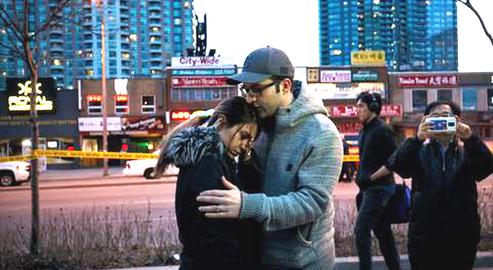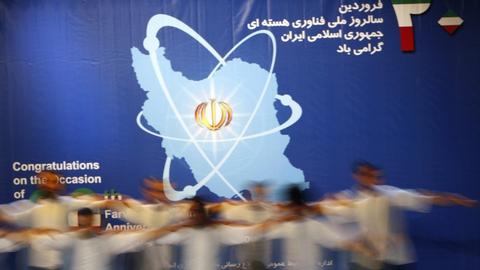A visiting professor from Iran. A Jordanian visiting his children. A beloved grandmother.
The victims of the Monday, April 23 attack in Toronto, which latest reports link to the attacker’s anti-women ideology, were cruelly random. As he plowed down the city’s legendary Yonge Street, Alek Minassian seemed to have driven into anyone he found in his path.
The sense of shock and grief might be greatest for the families of (so far) 10 people who lost their lives in the attack, but it is definitely not theirs alone. It has overshadowed the lives of many residents of North York, the northernmost borough of Toronto where the attack happened, and across the broader city.
Mick Reiss is a paramedic who was called to the site of the attack. He describes a “very chaotic scene” in its immediate aftermath.
“We were the third ambulance on the scene and arrived to find people — 10 or maybe 12 — bleeding and in various levels of consciousness,” he told IranWire in an email. “There were also a few bodies that were covered up... A police officer pulled me aside and cautioned me to be on guard in case the driver came back.”
Reiss says a “sense of chaos” had overtaken the area: “You had every emergency service (fire, police, EMS) on scene, attempting to coordinate and facilitate patient care. This proved to be challenging as the scores of emergency vehicles had created a great deal of congestion. There was also a serious security concern as the assailant had not been caught yet.”
That sense of chaos has now given way to one of more solemn remorse.
“The neighborhood has become a ghost city,” North York-based blogger and writer Aida Ahadiany tweeted in Persian. “Everywhere is filled with cops, helicopters and yellow bands. People are lost and sad, walking down the streets.”
Ahdiany is one of many Iranians who calls North York home. For many Iranians around the world, the area holds something of a symbolic significance. Many have visited or known someone who lives or has lived there. North York Civic Center and Mel Lastman Square, two prominent sites of the attack, host regular Iran-related events, perhaps even on a daily basis. The area’s member of parliament is of Iranian origin, as have been many candidates running for office here.
Shock is not limited to those who directly witnessed the events and has even affected those who read about it on the news, according to Anthony Feinstein, a professor of psychiatry specializing in post-traumatic stress disorder (PTSD) at the University of Toronto.
“It is really hard to predict how wide the effect it will be,” Feinstein told IranWire. “If you look at the broader population, the rate of PTSD is about five to six percent. In theory, for anyone with any links to the event, there will be an increased risk.”
Feinstein says it takes at least a month for PTSD to be diagnosed and it shouldn’t be mistaken with other signs of shock and distress.
“People will be distressed by what they saw but that doesn’t mean you’ve got PTSD,” the neuropsychiatrist said. “In order to have that, there should be very particular symptoms that interfere with your ability to function.”
Those affected by the attack who have a history of dealing with trauma will find an increased challenge, he says. “People who might have been traumatized by their experience in Iran, for example, and who came to Canada because it is supposedly safe and are now confronted by something like this...[it will] bring back memories of older trauma. Memories and recollections of earlier trauma might be triggered.”
The War in Syria — and Now Tragedy in Toronto
Another case in point is a Syrian refugee who spoke to IranWire on condition of anonymity. His daughter went to school in the area.
“I cried all the way to my girl’s school when I went to pick her up,” he told IranWire. “All I could think of was the war. Her school was also bombed in Syria.”
“The helicopters, the sirens, all that was near the house reminded me of the war,” he said before bursting into tears. “And now they will all think we are behind this. All over Twitter they are saying it’s refugees who made here unsafe. What do we do but work hard to provide for our families?”
Authorities are yet to publish a list of victims, but reports in the media and posts on social media can go some way to paint a picture. Lying in Sunnybrook Hospital’s intensive care unit is Amir Kiumarsi, a microbiologist from Iran who had moved to Toronto to teach at Ryerson University. He was also active with his trade union and a chief steward of Unit 2 of the Canadian Union of Public Employees’ local union.
Some time before the attack, anonymous students had taken to ratemyprofessors.com to praise Kiumarsi.
“I had the privilege of having Dr. Kiumarsi as my Organic I professor last semester. He is by far one of the best professors,” one of them wrote. “Very patiently makes sure you learn, engages the student and above all shows that he cares which is the most important trait in a teacher.”
“He is by far one of my favorite professors!” another went. “AMAZING PROF definitely recommend!!”
They will be among the many affected by Monday’s cruel attack.
Victims of the attack:
While we know that 10 people lost their lives in the Toronto attack, their names and stories are only slowly making their way into the public eye. Ontario’s chief coroner has said it will take days for the office to officially identify the 10 people but relatives, foreign governments and employers have meanwhile come forward with at least five names.
Anne Marie D’Amico
Thirty-year-old Anne Marie worked at the Canadian branch of Invesco, an investment management company based in Atlanta. The company confirmed her death, as did Tennis Canada, for which she volunteered.
D’Amico had volunteered, since the age of 12, for the Rogers Cup, a tennis tournament that takes place in Montreal and Toronto. A love for tennis very much ran in the family, as her parents, grandmothers and brother were also volunteers for the same tournament. Anne Marie had started as a ball girl but was managing a group of about 200 volunteers at the time of her death.
Dorothy Sewell
Sewell, 80, worked at Sears Canada but is primarily known for two things: being a wonderful grandmother and for her love of sports. Elwood Delaney, one of her grandsons, told the Canadian Broadcasting Corporation (CBC) that she was an avid fan of the Toronto Blue Jays baseball team and also the Maple Leafs, its forever-losing hockey team. Delaney also told the Star that she was “the best grandma anyone could ever ask for.”
Munair Najjar
Octogenarian Munair Najjar was a Jordanian citizen. The Jordanian Foreign Ministry confirmed his death. He had been in Toronto visiting his children and grandchildren.
The president of the Canadian Jordanian Society has expressed its gratitude for all the support it has received: “We are very proud to be Jordanian Canadians and we really do appreciate the love and support that not only Toronto or North York, but the whole country, has given us.”
Renuka Amarasinghe
Amarasinghe, 48, was a single mother who hailed from Sri Lanka. She was loved not only by her seven-year-old son, Dioyon, but other children as well. Over the last three years, she had worked as a nutrition staff member for a number of Toronto schools and her employer, the Toronto District School Board, announced her death in a statement.
Amarasinghe was on the first day of her job at a new school when she was caught up in the attack.
She was also active in the local Buddhist community. Asoka Pinnaduwage from the Toronto Mahavihara Buddhist Meditation Centre spoke to the media about Amarasinghe: “I used to know her and her son. She comes every Sunday. She has no other relative in Canada, other than her ex-husband.”
A GoFundMe campaign for Renuka Amarasinghe’s son has so far raised more than Canadian$120,000. It hopes to raise $150,000, which will be used to set up a trust fund for the boy.
Renuka Amarasinghe was also an active trade union member and her local, CUPE 4400, described her in a press release as a “well-loved member of the Scarborough community.”
Chul Min Kang
All Toronto foodies know about the Brazilian steakhouse chain Copacabana, and they would have known Chul Min Kang — known as “Eddie” — a native of South Korea who was a chef at the downtown branch. He was known for his “kick ass” cooking and Armando Sandoval, one of Kang’s co-workers, told Global News, of his “passion for food.”
Along with Iranians, Koreans form one of the main ethnic groups in the Willowdale area where the attack happened. The South Korean government has announced the death of Kang and one other national, although it’s not yet clear who the other victim is.
visit the accountability section
In this section of Iran Wire, you can contact the officials and launch your campaign for various problems

























comments